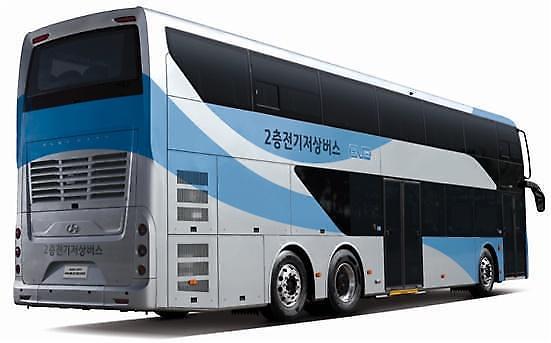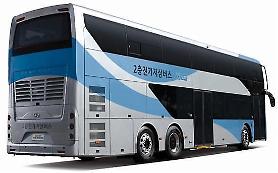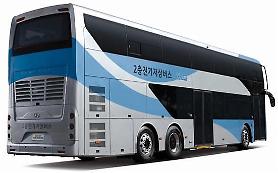
[Courtesy of the Ministry of Land, Infrastructure and Transport]
In 2019, about 1.3 million people commuted from Gimpo, a western satellite city of Seoul, and the western port city of Incheon to the capital city using public transportation including subway trains and buses. About 43 percent of the passengers use buses, which take about 90 minutes to travel to Seoul from Incheon.
Diesel-engine double-decker buses were first adopted in Seoul and its neighboring cities in 2015 and electric double-decker buses were adopted in 2020. A total of 20 eco-friendly double-deckers were in operation as of January 2022. The Metropolitan Transport Commission (MTC) operated by the transport ministry aims to improve the inter-city bus service including the additional deployment of electric double-decker buses through a 42.6 billion won ($31.3 million) project. A total of 60 two-story buses will be operated by the end of 2022.
The transport ministry said a total of 15 electric intercity double-decker buses will be deployed to two routes that carry commuters from Seoul to the southwestern satellite city of Hwaseong, and back. On a route that connects Seoul to the southern city of Yongin, 11 buses will be deployed. Various driving safety devices such as a lane departure warning (LDW) system are installed on the buses. The LDW system can prevent accidents by warning a driver when a vehicle moves out of its lane.
"Starting in 2023, we will try hard to traffic problems on intercity routes by significantly increasing the number of two-story electric buses," MTC's intercity traffic policy bureau director Kim Young-kook said in a statement on November 22.
As a state project to achieve net-zero carbon dioxide emissions by 2050, South Korea has pushed for the adoption of hydrogen and electric buses to achieve net-zero carbon dioxide emissions by 2050. Seoul will operate some 1,000 hydrogen buses and build 11 hydrogen fueling stations by 2025. About 10 percent of diesel vehicles will be replaced with electric vehicles in the capital city by 2026.
Copyright ⓒ Aju Press All rights reserved.



